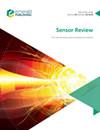生物传感器和纳米材料在检测牛奶和奶制品中掺假物质(三聚氰胺和尿素)中的作用
IF 1.6
4区 工程技术
Q3 INSTRUMENTS & INSTRUMENTATION
引用次数: 0
摘要
用途牛奶通常被称为终极食品,因为它能满足婴儿、儿童和成人的营养需求。它是蛋白质、脂肪、甜味、维生素和矿物质的丰富来源。由于牛奶作为一种健康的乳制品被广泛使用,因此牛奶掺假问题具有全球意义。乳制品行业中的欺诈手段日益频繁,引发了人们对其纯度和质量的担忧。本研究考察了研究现状,并分析了最近的发展进展。研究结果目前已有一些方法和技术可以有效杜绝牛奶掺假这种令人憎恶的做法。它概述了牛奶掺假检测,并研究了生物传感器在识别常见牛奶掺假物方面的有效性。本文章由计算机程序翻译,如有差异,请以英文原文为准。
Role of biosensors and nanomaterials in the detection of adulterants (melamine and urea) in milk and milk products
Purpose
Milk is often referred to as the ultimate food because it meets the nutritional needs of infants, children and adults alike. It is a rich source of protein, fat, sweetness, vitamins and minerals. Because of its widespread usage as a healthy dairy product, the issue of milk adulteration is of global significance. The increasing frequency of fraudulent methods in the dairy business raises concerns about its purity and quality.
Design/methodology/approach
A study was conducted and reviewed that looked at several approaches for detecting milk adulteration during the past 15 years. This study examines the current state of research and analyzes recent advances in development.
Findings
There are ways and technology available that can effectively put an end to the abhorrent practice of milk adulteration.
Originality/value
This research takes a unique approach, focusing on the application of milk adulteration. It provides an overview of milk adulteration detection and investigates the effectiveness of biosensors in identifying common milk adulterants.
求助全文
通过发布文献求助,成功后即可免费获取论文全文。
去求助
来源期刊

Sensor Review
工程技术-仪器仪表
CiteScore
3.40
自引率
6.20%
发文量
50
审稿时长
3.7 months
期刊介绍:
Sensor Review publishes peer reviewed state-of-the-art articles and specially commissioned technology reviews. Each issue of this multidisciplinary journal includes high quality original content covering all aspects of sensors and their applications, and reflecting the most interesting and strategically important research and development activities from around the world. Because of this, readers can stay at the very forefront of high technology sensor developments.
Emphasis is placed on detailed independent regular and review articles identifying the full range of sensors currently available for specific applications, as well as highlighting those areas of technology showing great potential for the future. The journal encourages authors to consider the practical and social implications of their articles.
All articles undergo a rigorous double-blind peer review process which involves an initial assessment of suitability of an article for the journal followed by sending it to, at least two reviewers in the field if deemed suitable.
Sensor Review’s coverage includes, but is not restricted to:
Mechanical sensors – position, displacement, proximity, velocity, acceleration, vibration, force, torque, pressure, and flow sensors
Electric and magnetic sensors – resistance, inductive, capacitive, piezoelectric, eddy-current, electromagnetic, photoelectric, and thermoelectric sensors
Temperature sensors, infrared sensors, humidity sensors
Optical, electro-optical and fibre-optic sensors and systems, photonic sensors
Biosensors, wearable and implantable sensors and systems, immunosensors
Gas and chemical sensors and systems, polymer sensors
Acoustic and ultrasonic sensors
Haptic sensors and devices
Smart and intelligent sensors and systems
Nanosensors, NEMS, MEMS, and BioMEMS
Quantum sensors
Sensor systems: sensor data fusion, signals, processing and interfacing, signal conditioning.
 求助内容:
求助内容: 应助结果提醒方式:
应助结果提醒方式:


